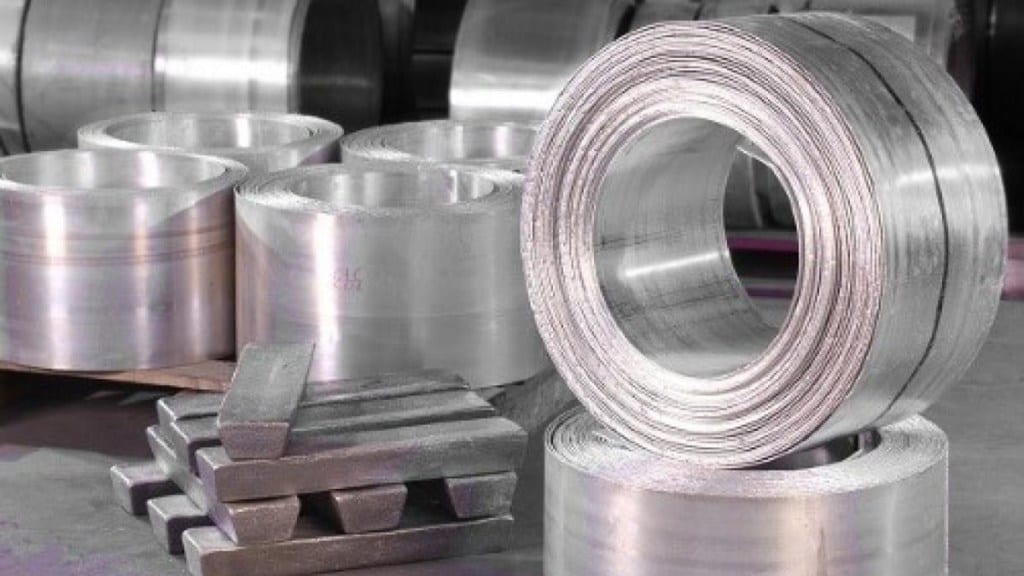The carbon tax that the European Union (EU) will impose on five bulk commodities will make India’s aluminium exports to Europe unviable, according to a report.
The tax that is part of the wider plan of the 27-member bloc, called Carbon Border Adjustment Mechanism (CBAM), to bring down net carbon emissions to zero by 2050 will add an incremental cost of $1,500-1,600 per tonne of aluminium that will be exported to the EU, the analysis by rating agency Crisil said.
The tax under CBAM has been proposed on iron & steel, cement, aluminium, fertilisers and electricity to start with. While the transition period for the new tax will start from October 1 of this year, actual collection will begin from January 2026. During the transition period, the EU will collect firm-level data on carbon emission while making the product.
However, Crisil added that during the initial phase of CBAM, exports to the EU will likely remain stable since domestic manufacturers (Vedanta and Hindalco) have strong greenhouse gas emission reporting standards, which will fulfill the requirement until 2025-end. On international metal exchanges, aluminium is trading at $2,227.85 per tonne.
India exported $8.84 billion worth of aluminium and aluminium products, of which around 25% or $2.24 billion went to the EU, in the last financial year, according to commerce ministry data.
“India produces 4.1 million tonne (MT) of primary aluminium annually — amounting to 6% of global production —of which as much as 56%, or 2.3 MT, is exported. It is one of the lowest-cost producers of aluminium globally, owing to integrated operations and low costs of power generation since it uses coal-based captive plants,” the Crisil report said.
As India produces aluminium using coal-based captive plants, it sits at the upper end of the spectrum when it comes to emissions, the report said. The average greenhouse gas emission intensity of the domestic aluminium industry is one of the highest globally, at 21-22 tonne of carbon dioxide per tonne of aluminium.
China, which is the largest producer of aluminium with 59% production share, also uses mostly coal; its emissions per tonne of aluminium are 17-18 tonne. Europe has one of the lowest greenhouse gas intensities, at 6-7 tonne of carbon dioxide per tonne of aluminium since 93% of the requirement is met through hydropower.
The rate of carbon tax on imports will be calculated on the basis of the difference between how much carbon was emitted during the production of the export product and the limits laid down under the CBAM.
“The current carbon price per tonne is $100 in the EU. India has no energy trading system in place, so the EU will charge $100 tonne,” Ajay Srivastava, a former commerce ministry official and founder of Global Trade Research Initiative said. “The CBAM tax is estimated to be 20-35% tariff equivalent. This is far higher than the EU’s average import tariff of 2.2% for manufactured products,” he added.
When the tariffs kick in from 2026, primary aluminium producers exporting to Europe will have to buy EU-ETS certificates for the emissions. The greenhouse gas emission intensity gap between Europe and India is 14-15 tonne per tonne of aluminium produced, which will lead to an incremental cost of $1,500-1,600 per tonne of aluminium, Crisil said.
Indian manufacturers are currently competing with those in the Middle East, Canada, Norway and Iceland, which have significantly lower emissions. With Middle Eastern countries also expanding their capacities, competitors in the region are expected to be in a better position after the CBAM implementation.
CBAM is starting with five bulk commodities and by 2034 it will cover all products exported to the EU. The UK, Canada, Japan, the US and others are also bracing up to levy CBT on imports.
Domestic manufacturers such as Vedanta, Hindalco and NALCO have announced initiatives to reduce greenhouse gases emissions. However, despite taking active measurements to reduce emissions, domestic manufacturers are unlikely to bridge the steep emission intensity gap significantly, owing to coal-based power generation. The European market will be unviable despite domestic players lowering emissions intensity by 20-25% by fiscal 2030, Crisil said.


